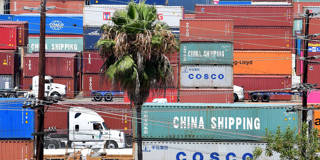China’s failure to purchase enough US exports under the flawed “phase one” trade deal is cause for celebration. The only way the pact could have been fully implemented was if China used the same opaque, non-market tools that have long bedeviled American firms trying to do business there.
CHICAGO – Two years ago, in an attempt to end their deepening trade war, the United States and China signed an agreement in which China promised to purchase an additional $200 billion worth of US goods and services in 2020 and 2021, relative to 2017 levels. That implied a total purchase commitment of $502.4 billion over the two-year period. In the end, China bought only 57% of the US exports that it had promised to buy, or $288.8 billion, and thus purchased none of the extra $200 billion.
But this shortfall, far from being a failure, should be a cause for celebration. That is because the only way the so-called “phase one” agreement could have been fully implemented was for China to use the same non-market tools that have long bedeviled American firms trying to do business there.
Former US President Donald Trump started the trade war in 2018 with the aim of forcing China to end its theft of US companies’ intellectual property, its subsidies for “strategic” sectors, and, more broadly, its use of non-transparent regulatory measures that harm US firms. In January 2020, after multiple rounds of reciprocal tariff hikes had battered US-China trade, the two countries reached a settlement containing the Chinese purchase commitments.

CHICAGO – Two years ago, in an attempt to end their deepening trade war, the United States and China signed an agreement in which China promised to purchase an additional $200 billion worth of US goods and services in 2020 and 2021, relative to 2017 levels. That implied a total purchase commitment of $502.4 billion over the two-year period. In the end, China bought only 57% of the US exports that it had promised to buy, or $288.8 billion, and thus purchased none of the extra $200 billion.
But this shortfall, far from being a failure, should be a cause for celebration. That is because the only way the so-called “phase one” agreement could have been fully implemented was for China to use the same non-market tools that have long bedeviled American firms trying to do business there.
Former US President Donald Trump started the trade war in 2018 with the aim of forcing China to end its theft of US companies’ intellectual property, its subsidies for “strategic” sectors, and, more broadly, its use of non-transparent regulatory measures that harm US firms. In January 2020, after multiple rounds of reciprocal tariff hikes had battered US-China trade, the two countries reached a settlement containing the Chinese purchase commitments.